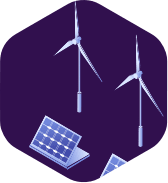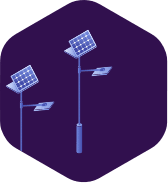Pollution is one of the biggest problems that affects people’s quality of life in cities.
The challenge
How is human health affected by pollution?
Chronic obstructive pulmonary diseases (COPD)
Pulmonary cancer
Coronary heart diseases
Stroke
Lower respiratory tract infection
Most sources of outdoor air pollution demand concerted action by local, national and regional level policy-makers working in sectors like transport, energy, waste management, urban planning, and agriculture.
By 2050, outdoor air pollution
(particulate matter and ground-level ozone) is projected to become
the top cause of environmentally related deaths worldwide.
IoT Solution for Smart Environment
IoT technology allows users to measure the quality of the air by controlling several parameters. Air pollution means the amount of Sulfur Dioxide (SO2), Nitrogen Dioxide (NO2), and Carbon Monoxide (CO) in the air exceeds the criteria set by the World Health Organization (WHO).
The Air Quality Index measures the quality of air. It shows the amount and types of gases dissolved in the air. The air quality index is composed of 8 pollutants (PM10, PM2.5, NO2, SO2, CO, O3, NH3, and Pb). There are 6 categories of air in the air quality index. The categories define the quality of the air. They are as follows; good, satisfactory, moderate, poor, very poor, and severe.
The WHO Air quality guidelines offer global guidance on thresholds and limits for key air pollutants that pose health risks. As an example, the Guidelines indicate that by reducing particulate matter (PM10) pollution from 70 to 20 micrograms per cubic meter (μg/m), we can cut air pollution-related deaths by around 15%.
Benefits of IoT technology in the Environment
Air quality measurement is mandatory in cities and industries to demonstrate compliance with environmental regulations.
Information about air quality provides citizens with better resources to avoid respiratory pathologies and apply risk prevention measures.
Environmental monitoring is useful to explain to citizens the reasons for applying traffic restrictions in case of high pollution.
Cities that monitor their pollution levels can implement better measures to make their air quality healthier for their neighbours and also for tourists, obtaining environmentally friendly destination certifications.

Water
Data-driven water flow

Energy
Less emissions, more power

Lighting
Centrally controlled lighting grid

Waste Management
Optimized collection services for cleaner cities

Environment
Less air, noise and water pollution

Mobility
Faster, safer, cleaner getting around


